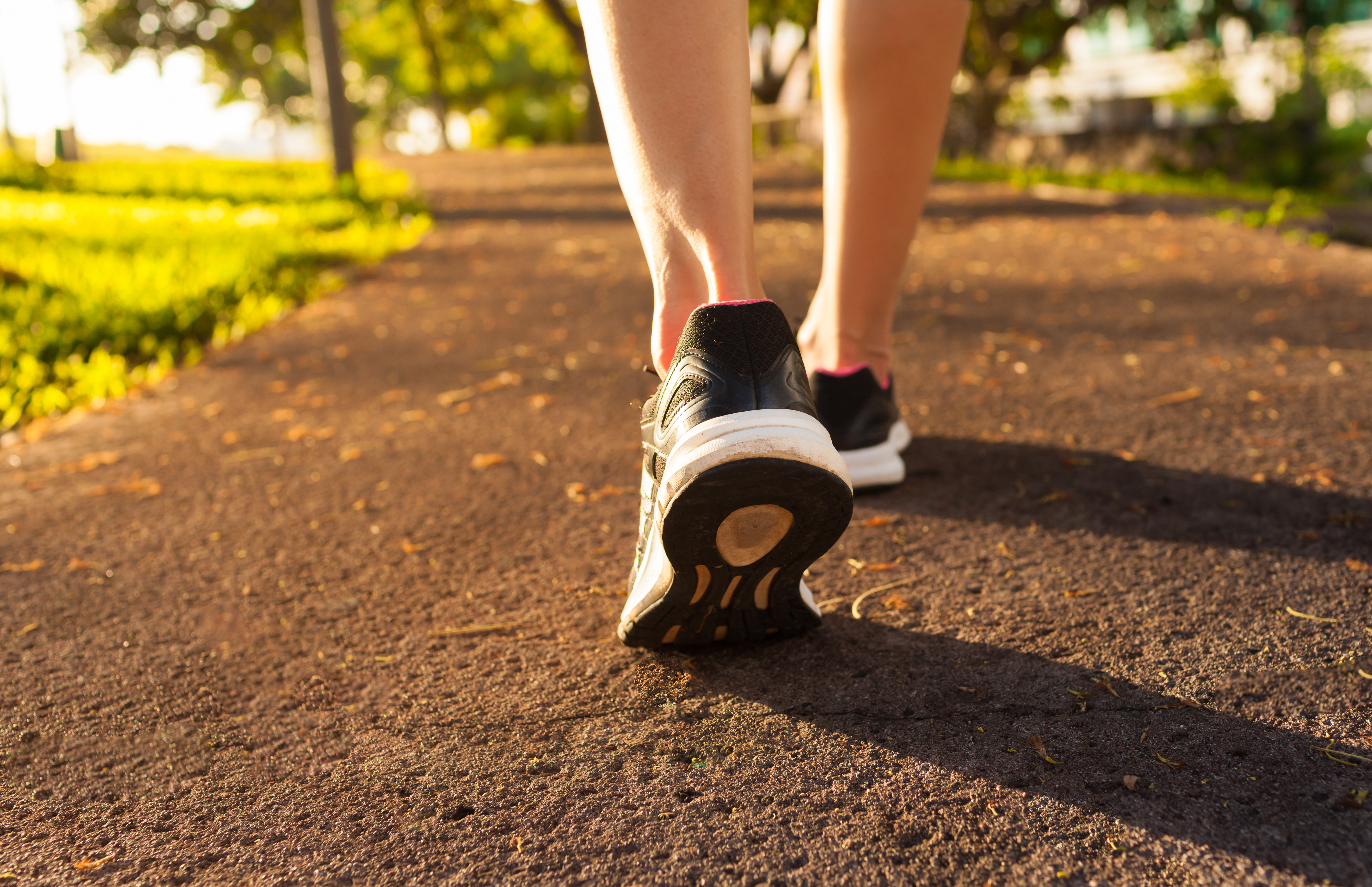Walk for Life

If you are thinking of getting active, healthy and want to lose some weight then walking is the simplest form of exercise you can choose. The great thing about walking is that you can fit it around your lifestyle whether you work full-time, part-time or are at home every day.
As with any form of exercise, before you start it is always advisable to seek medical advice particularly if you suffer from any injuries or illnesses, which may be aggravated by starting a new walking program. That said walking is the safest form of exercise you can choose.
Regular walking has been shown to reduce the risk of chronic illnesses, such as heart disease, type 2 diabetes, asthma and strokes.
Embarking upon a walking program is relatively cheap, although it is advisable to invest in a good pair of walking shoes or trainers to support your feet and ultimately your body and reduce the risk of injury. Wear comfortable clothing that allows you to move freely. Thin layers are a good idea so that you can add or remove layers depending on weather conditions. Obviously, waterproofs are an essential item too.
So now you’ve organised your footwear and clothing you need to start planning your route. It’s always a good idea to plan your route in advance so that you can allocate the correct amount of time. Most of us walk about 4,000 steps per day so gradually building up and aiming for 10,000 steps is a good benchmark. Pedometers are a fun way to keep track of your walking and listening to your favourite music along the way is motivating and passes the time.
What do you need to pack each time you go walking?
Make sure you pack your mobile phone especially if you are planning to walk in rural areas and more importantly tell someone where you are going.
For long walks, you may want to put some water, healthy snacks, sunscreen, blister plasters and a hat in a small backpack. Avoid overloading your backpack as it may compromise your posture and cause discomfort around your neck, shoulders and back.
Learning to walk properly is key to achieving your targets without injury. Many of us believe that we know how to walk properly – after all we’ve been doing it since a very early age – but the chances are you are not.
If your intention is to start a serious walking program three to five times per week then walking incorrectly may cause discomfort or even pain further up your body – in your knees, pelvis, spine possible even your shoulders!
So what are the mechanics of walking?
Fascia (connective tissue) is everywhere in your body – around muscles, bones and organs. You may be surprised to learn that fascia in the soles of your feet is connected to your pelvis and all the way up to your forehead! This is one reason why posture and walking correctly is so important!
Lets start by focussing on your feet. When you walk it is important for the feet to strike the ground evenly from your heels through the ball of your feet onto your toes. Make sure your weight is evenly distributed across all of your toes. This may seem very obvious but, for many of us, this movement has been replaced by striking the ground flat footed. More often than not this habit has developed because we are always in a rush.
When you strike the ground flat footed, it places stress through your ankles, knees, hips, spine and maybe as far up as your shoulders. Over time this may cause discomfort and pain. It also prevents the muscles in your feet and legs from doing the job they are designed to do.
It is not only the body that is affected by walking incorrectly. Striking the ground incorrectly prevents your nervous system from communicating effectively with your brain so over time your balance and posture is compromised. The feedback between your feet and brain is called proprioception.
What can you do to improve your walking technique?
When you start making changes to your walking pattern, start slowly and practice for about 15 minutes per day. This will allow your body to adjust to your new technique. It is likely that it will feel awkward at first but with time it will create a new habit in your body and you will walk differently without even thinking about it.
Let’s now consider what you are aiming for with each part of your body.
Be aware of each part of your foot as you place it on the ground. Concentrate on how you roll from your heel, ball of the foot and toes. Allow each step to be free from tension and soft as it strikes the ground.
Move through your ankle with ease. This is important and is quite difficult to master at first. Once the ankle joints become more mobile, the muscles in your legs start to lengthen.
Once you feel an improvement in your foot strike, move your focus and awareness up your body to your knees, pelvis and spine. If you improve your knee and hip alignment, the impact on your joints will be reduced.
Learning how to move your pelvis correctly may reduce mobility issues, especially as you get older. A stable and lifted pelvis allows your glutes (three buttock muscles) propel your pelvis forward as your feet strike the ground. This then allows your thigh muscle to extend further back with each stride.
Finally, lengthen from the base of the spine up to the crown of your head to create space between each vertebra. This will help connect the top half your body to the bottom half of your body by engaging your Psoas muscle.
The Psoas muscle is a true core muscle. It originates at the last thoracic vertebra (T12), attaches to L1 to L5 in your lumbar spine and runs over the pubic bone to the minor trochanter, which is a small protuberance of bone that projects at the back of the femur (thigh bone).
It is important to create lift through your spine without creating more stress in your body by pushing your chest and head forward. A good visual is to imagine that a thread is lifting you upwards from the top of your head.
So far I have not mentioned you head, neck, shoulders and arms. These parts of your anatomy may be the furthest away from the ground but they are still equally as important.
Lets start with your head. It balances on the atlas, which is the first vertebra in your cervical spine and weighs approximately 11lbs.
In our world of mobile phones and computers most of us develop poor posture by looking down at our mobile phone or by pulling our head forward to look at a PC screen.

This may create tension and sometimes pain in the back of the neck. So when walking it is important to keep your eye gaze up and look ahead – not down!
Moving down to your neck and shoulders, try and create space and imagine your shoulder blades to melt over your rib cage. Think about lifting up from behind the ears to create a long neck allowing your spine to align itself correctly creating good posture.
When walking, your arms should move like pendulums with your elbows bent at a 45-degree angle. Concentrate on letting your arms swing backwards and forwards from your shoulder girdle focussing across the back of your body. This will create a gentle rotation of your spine and will help you to move more efficiently. Allowing your arms to move freely will help reduce tension in your neck, shoulders and spine.
If you put all of the above into practice you are learning a new movement pattern otherwise known as a ‘brain-muscle pathway”. You are unravelling an old, incorrect movement pattern and creating a new one by using your muscles in the right way.
This is complicated stuff and your brain is working as hard as your body which is why is can feel mentally challenging. If your body feels stiff and awkward don’t panic but give yourself time to adjust. It simply means that your brain-muscle pathway is just establishing itself.
Now you know how to retrain your body and mind, begin by increasing your new walking pattern each day, keeping a note of how your body feels. For example you may feel that your ankles and shoulders ache a little. It is important to recognise how your body is responding to change.
It may take a while for the new brain-muscle pathway to develop so be patient and treat your body with kindness and self-compassion and acknowledge that your body feels taller, leaner and stronger.
